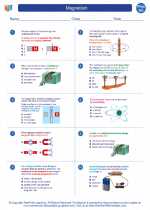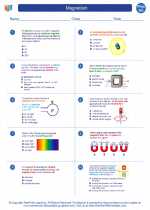The Pacific Ocean: An Overview
The Pacific Ocean is the largest and deepest of Earth's oceanic divisions. It extends from the Arctic Ocean in the north to the Southern Ocean in the south and is bounded by Asia and Australia in the west and the Americas in the east. It covers approximately 63 million square miles and contains more than half of the Earth's free water, with an average depth of about 13,000 feet. The Pacific Ocean is home to a diverse range of marine life and plays a crucial role in regulating the Earth's climate.
Key Facts and Figures
- Surface Area: Approximately 63 million square miles
- Deepest Point: Mariana Trench, with a depth of about 36,070 feet
- Islands: The Pacific Ocean is home to numerous islands, including Hawaii, Tahiti, and the Galápagos Islands
- Ring of Fire: The Pacific Ocean is characterized by a high level of volcanic and seismic activity, known as the "Ring of Fire"
Study Guide
Physical Characteristics
Discuss the physical properties of the Pacific Ocean, including its size, depth, and major oceanic features such as the Mariana Trench and the Ring of Fire. Explore the impact of these physical characteristics on marine life and the global climate system.
Geological Significance
Examine the geological history of the Pacific Ocean, including its formation and tectonic activity. Discuss the role of the Pacific Plate and its interactions with other tectonic plates in shaping the ocean's landscape and contributing to natural phenomena such as earthquakes and tsunamis.
Marine Biodiversity
Explore the rich and diverse marine life found in the Pacific Ocean, from microscopic plankton to iconic species such as whales, dolphins, and sea turtles. Investigate the unique ecosystems of coral reefs and deep-sea hydrothermal vents, and consider the conservation challenges facing these environments.
Economic and Cultural Importance
Analyze the economic and cultural significance of the Pacific Ocean for the countries and communities bordering its shores. Consider topics such as fishing and aquaculture, shipping and trade routes, tourism, and the traditional practices and beliefs of indigenous Pacific cultures.
Environmental Challenges
Discuss the environmental threats facing the Pacific Ocean, including plastic pollution, overfishing, ocean acidification, and the impacts of climate change. Consider the global efforts and initiatives aimed at addressing these challenges and promoting sustainable management of the ocean's resources.



